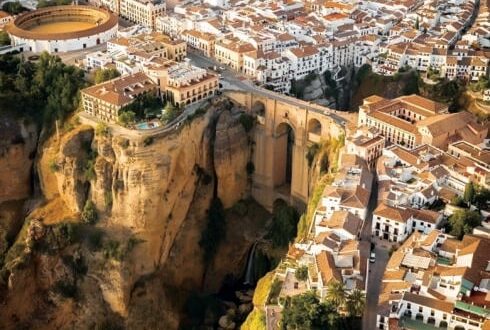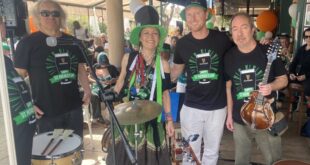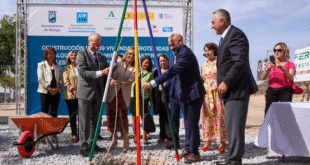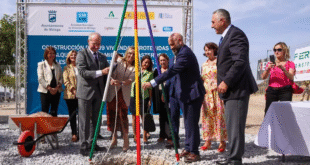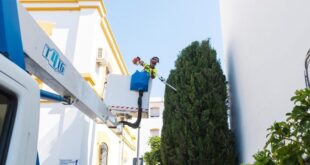More than 10,000 participants will participate in the famous Ultramarathon Race between 9-11 May, organized by the Spanish Legion.
Participants have 24 hours to complete the difficult 101-kilometre course. They can either walk, run or use a mountain bike.
In the adult category, there will be nine thousand competitors and in the children’s section, one thousand two hundred.
The event has been running for 30 years and draws participants from across Europe.
READ MORE Watch: Want a free refrigerator? Rescue operation continues after dozens units fell into the water off the coasts of Spain


The route of the race passes through the comarca (district) of Ronda, taking in Arriate, Setenil de las Bodegas, Alcalá del Valle, Montejaque, and Benaoján, before finishing in central Ronda, in the Alameda Park.
The Legion is the elite spearhead unit of the Spanish Army and is based at Ronda. It has been around for over 100 years.
The race was first held in 1995 to celebrate the 75th anniversary of the Legion and to encourage youth to pursue their passions through sports, instead of engaging in harmful activities such as drug use.
READ MORE Will Spain’s Semana Santa, the most sacred of all Spanish holidays, be a washout this year? Storm Olivier causes orange alerts in Andalucia
The only external events that have caused the suspension of the race are Covid, which led to the cancellation of the race in 2020-1 and the Legion’s posting overseas (Kosovo 2001, Iraq 2004, Afghanistan 2010, and Lebanon 2023).
The President of the Málaga Provincial Council, Francisco Salado, has highlighted the his support for the 101-kilometre race, which combines nature and sport and is a magnificent example of the strong bond between the Legion and the province of Málaga.
“What started in 1995 as a race between the Legion and civilians in Ronda has become the benchmark for this kind of road and mountains sporting event,” said he recently. “It is also a magnificent showcase for promoting the tourism in Ronda.” He added that the event attracts 25,000 people, mostly from Spain, but also other countries.
READ MORE Beware of speeding drivers in Spain: mobile cameras and helicopters are deployed to crackdown during Semana Santa
The race will be organised by more than 1,500 people, who will also oversee the logistics and safety.
Colonel Fernando Sánchez has provided details of the race: over 24 hours there will be an individual foot race (4,700 participants) and a team race (1,100 participants). The race will include a 12-hour race for mountain bikes (3,200 competitors).
In addition to the Spaniards among the 9,000 participants are people of 12 other nationalities – primarily Portuguese. Fernando Sánchez has indicated that the oldest participants will be an 87-year-old man and a 77-year-old woman.
There will also be a three-kilometre non-competitive children’s race, which follows part of the 101 kilometre route. 1,200 participants are expected to take part.
The entire route is clearly marked, day and night, to ensure that no one gets lost.
A microchip is embedded in the race number of each participant. This document, known as a “Legionary Passport”, contains information about the race, including the start time, distance, description of the route, refreshment stations, and profile. Similarly, passports are designed to make it easier for organizers to control entry at unexpected or specific points.
The army will mobilize 900 Legionnaires and a total of 220 soldiers, including 14 doctors, 18 nurses, 150 students in physiotherapy, 150 Civil Protection volunteers and officers from the Civil Guard and National Police.
There will be six ambulances equipped Basic Life Support (BLS) and two Advanced Life Support (ALS), as well six mobile intensive-care units.
The race route will have refreshment stations roughly every 5 kilometres (for walkers) and 10 to 15 kilometres (for cyclists).
The distribution plan includes 34,000 litres bottled water (plus 25,000 litres isotonic beverages), 10,000 carbohydrate drinks, 23,500 sandwiches (3,200 litres coffee), 3,000 litres broth, 27,000 bananas (23,000 cherry tomatoes and mini cucumbers), 1,000 kilos vegetables (cherry tomato and mini cucumbers), 30500 energy bars and sweets, and 3,600 bars of chocolate.
Three water tanker truck, 34 trucks and 25 light all terrain vehicles will provide logistical support. Six all-terrain motorbikes, three trucks with tanks of water, and three busses are also included. The tents and tables will be set-up along with 30 portable toilets.
 Costa News Spain Breaking News | English News in Spain.
Costa News Spain Breaking News | English News in Spain.
